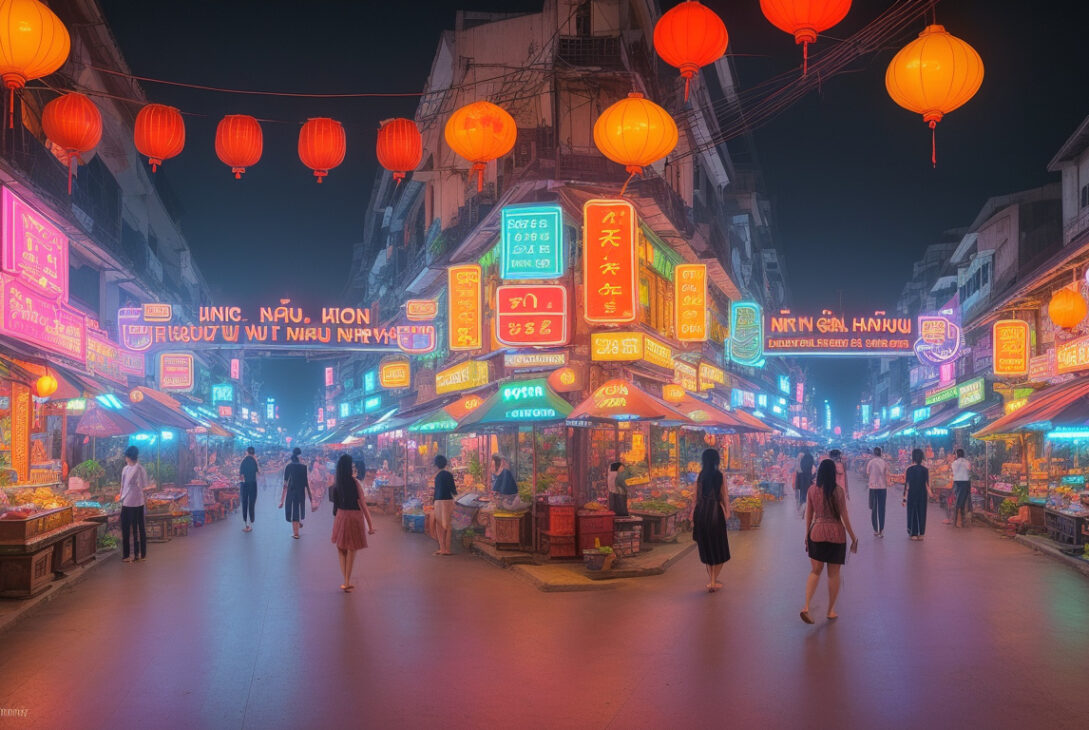Where echoes of the past guide the technology of tomorrow: Hà Nội’s harmonious blend of heritage and innovation
October 5, 2025 — Hà Nội, Việt Nam
In the centuries-old streets of Hà Nội, a quiet transformation is underway—one that honors the city’s rich history while embracing the promise of modern technology. Far from the usual fanfare accompanying innovation, Hà Nội’s digital revolution hums softly beneath its iconic red-tiled roofs and ancient walls, weaving new narratives that bring heritage sites to life without diminishing their revered legacy.
Digital transformation and green transition shape a historic city
Once marked by tranquil lakes reflecting pagodas and alleys infused with the scent of incense, Hà Nội is now reshaping itself through two converging revolutions: digital transformation and green transition. As one of Asia’s most historic capitals, the city is pioneering a model of “smart tourism” that reimagines cultural preservation through technological advancements rather than replacing tradition.
Central to this transformation is the move from paper to digital across its landmark heritage sites. Electronic ticketing systems have been introduced at major cultural icons such as the UNESCO-listed Temple of Literature (Quốc Tử Giám), the Imperial Citadel of Thăng Long, Hỏa Lò Prison Relic Site, and the ancient village of Đường Lâm. QR code check-ins have eliminated long queues, reduced paper waste, and enabled real-time visitor flow management, contributing to more sustainable tourism.
Smart ticketing: More than a convenience
Nguyễn Quyết Tâm, a digital transformation expert and member of the National Digital Government Committee, describes electronic ticketing as offering a “dual benefit model” — advancing both environmental responsibility and operational intelligence. Setting ambitious goals, he states that by 2030, “80–90 per cent of Hà Nội’s heritage sites will operate fully on electronic ticketing systems.”
At the Temple of Literature, Việt Nam’s first university and a treasured cultural symbol, the shift to online booking and QR scanning has significantly improved visitor experience. Nguyễn Liên Hương, deputy director of the site’s Cultural and Scientific Activity Centre, reflects, “Technology does not diminish sacredness. On the contrary, it preserves it. By removing chaos at the gate, we protect both the dignity of the heritage and the peace of the visitor.”
Blending tradition with cutting-edge experiences
The introduction of digital solutions has also unlocked new possibilities. Financial reporting has become streamlined, fraud prevention enhanced, and staff efficiency improved. Moreover, these innovations have enabled novel visitor experiences such as night tours, self-guided audio walks, and digital souvenir systems.
Beyond the capital’s grand landmarks, smaller communities are also embracing technology to share heritage. For instance, Liên Phái Pagoda in Hai Bà Trưng District now features QR codes across 28 heritage sites, enabling visitors to access historical narratives, photographs, and audio stories independently — eliminating the need for constant tour guides.
At the Imperial Citadel of Thăng Long, 3D mapping and virtual reconstructions resurrect lost palaces, letting visitors witness animated overlays of ancient throne halls superimposed on archaeological ruins through their smart devices. Meanwhile, Hỏa Lò Prison, historically a colonial jail, now utilizes immersive lighting, soundscapes, and projection technology for evocative night tours, demonstrating how technology can foster empathy alongside efficiency.
Challenges and future prospects
Hà Nội’s journey toward becoming a smart tourism hub does encounter hurdles. Unstable internet can interrupt scanning processes, and some older or independent travellers find digital interfaces challenging. QR codes sometimes go unnoticed due to discreet placement, and electronic tickets, while practical, lack the sentimental charm of traditional paper stubs.
Experts suggest pragmatic improvements such as offline backup systems to stabilize ticketing, bilingual ticket designs retaining commemorative appeal, multilingual promotional campaigns, continuous staff training, and stronger platform integration—from official websites to mobile apps and social media.
A vibrant city where history and future intertwine
With nearly 6,000 registered heritage sites—the highest concentration in Việt Nam—Hà Nội possesses a vast living archive fueling tourism as well as creative sectors like film, gaming, publishing, and education. Yet modernisation here is neither disruptive nor loud. Electric trams glide past French colonial villas after dusk, QR codes glow softly beneath banyan trees, and young tourists simultaneously livestream temple visits and pause respectfully before ancestral altars.
In Hà Nội, progress grows quietly yet persistently, like ivy climbing ancient walls. It is a respectful, unshakable convergence of past and future. Rather than merely adapting to change, Hà Nội is leading by example—demonstrating that technology and tradition can coexist in harmony, offering fresh ways to experience and preserve cultural heritage for generations to come.
Reported by Tuyết Mai and Quỳnh Hoa for Việt Nam News
Photos: VNA/VNS
Tags: Digital transformation, heritage preservation, smart tourism, Hà Nội, Temple of Literature, Imperial Citadel, electronic ticketing, VR tours










